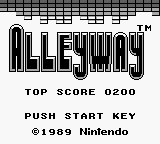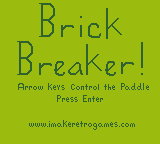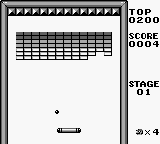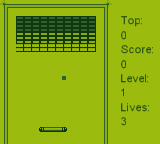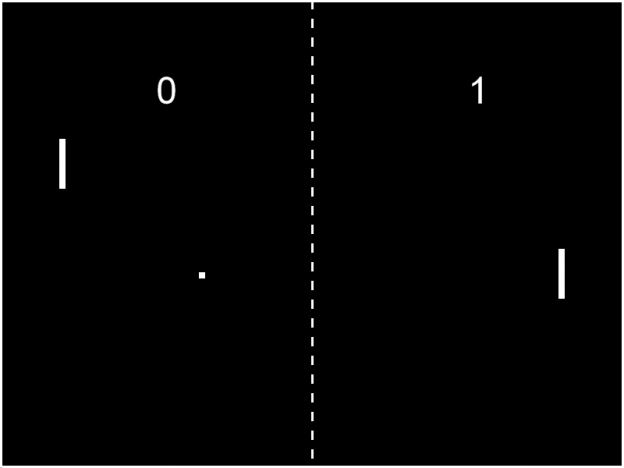Goal
I’m cloning Breakout, at a Game Boy resolution, with a Game Boy color palette for two reasons.
- To have something to submit to GBJam 3
- To fulfill the “Resolution” monthly challenge at 1GAM.
Graphics will be made in Aseprite, coding will be done in GameMaker Studio. Sounds will be pulled from OpenGameArt, because I don’t have time to make them.
History
Breakout was created by Atari in 1976 by Nolan Bushnell, Steve Wozniak, and Steve Bristow. Breakout was created around the concept of trying to make Pong into a single player game. Breakout has been ported to just about every language and system you can imagine, including an actual Game Boy port called Alleyway.
Details
I duplicated the layout of the Alleyway for my GBJam entry. I titled it Brick Breaker. Like my last project, it’s written in GML. No drag and drop methods are used. Some of the code is a little ugly, because I wrote it in great haste. I made a mistake with the timing of GBJam and though it began a week later than it actually did. Because of that, I did not have time to polish the game, or track any sounds in Famitracker.
All the graphics were made by me, in Aseprite, using the Game Boy palette that ships with the software. I obeyed the original Game Boy restrictions on sprite sizes and sprites per line. My graphics are based on, but not a clone of, the graphics from Alleyway.
You can grab the source here, and see a live demo here.
The source is messy, but pretty well commented. Following the comments, it should be pretty obvious how everything works. I may clean this example up one day, but for now, if you have questions, contact me and I’ll answer them ASAP.
